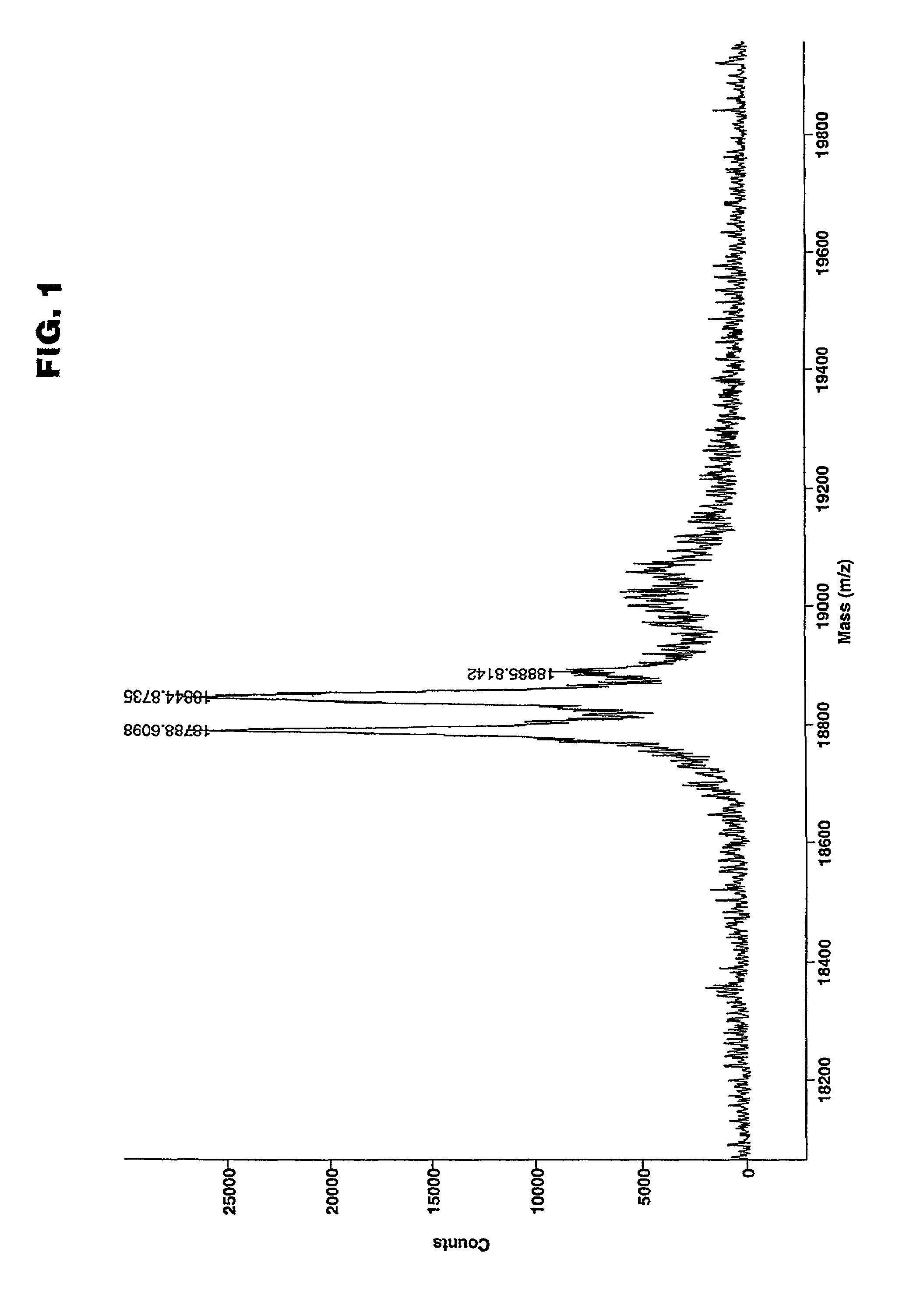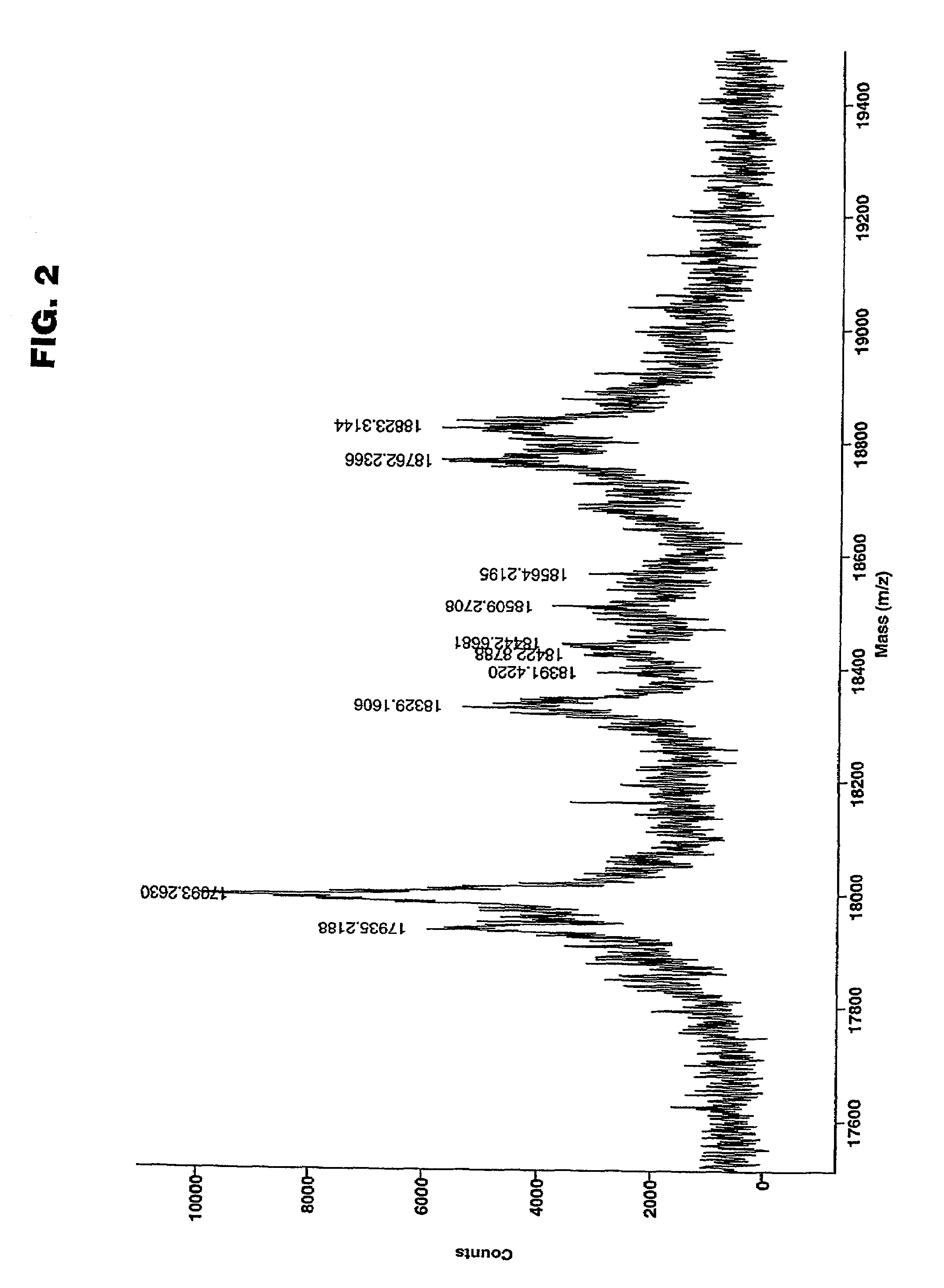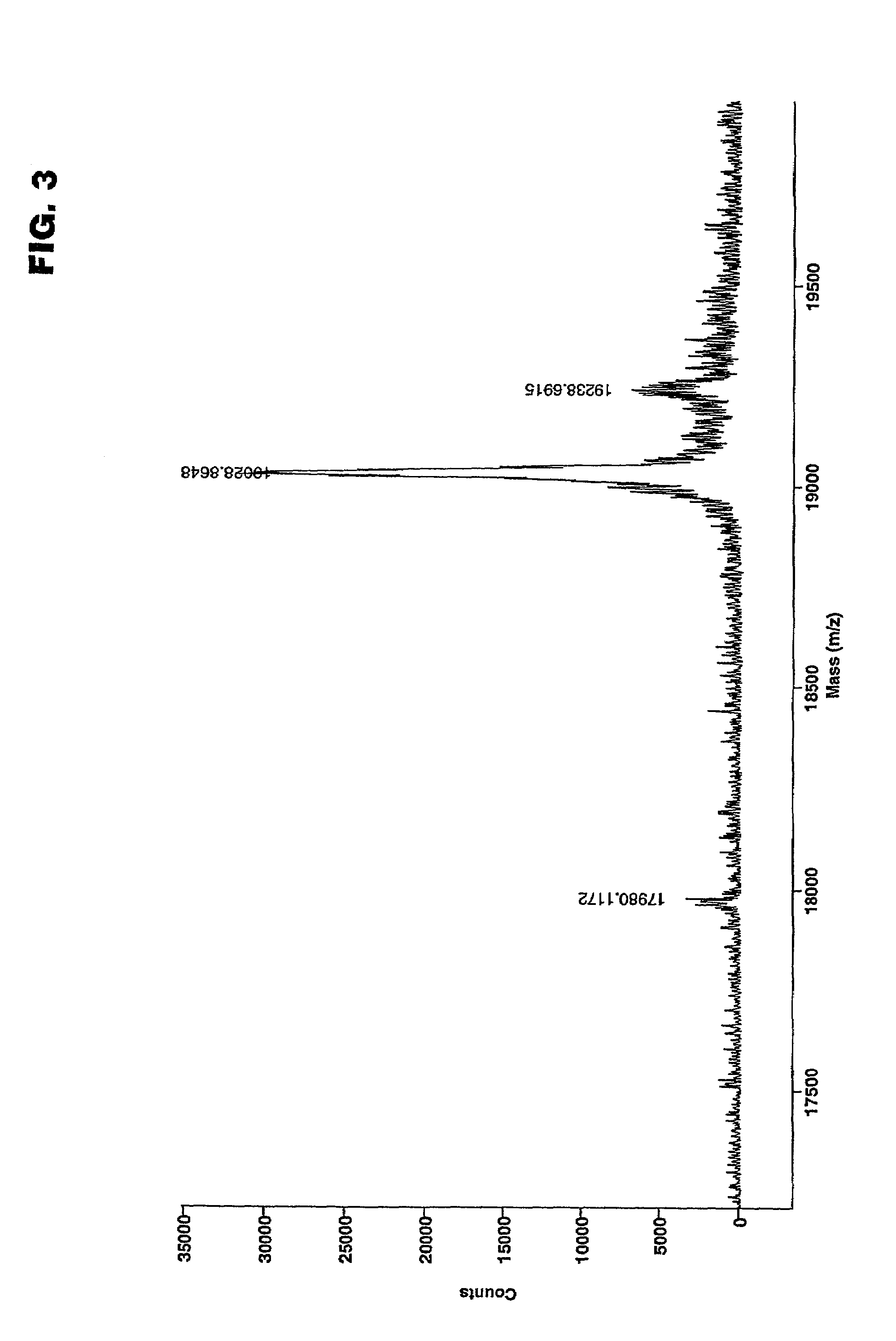Production of a parvovirus vaccine in plants as viral coat protein fusions
a technology of parvovirus and fusion protein, which is applied in the field of genetically engineered peptide production in plants, can solve the problems of limited potential applications of synthetic peptides for many uses, small viruses of multi-cellular plants, and limited chemical synthesis costs, and achieves easy and high-purification, high-efficiency and inexpensive production.
- Summary
- Abstract
- Description
- Claims
- Application Information
AI Technical Summary
Benefits of technology
Problems solved by technology
Method used
Image
Examples
example 1
Construction of pJL 60.3
[0050]To facilitate cloning of TMV U1 CP fusions into an infectious TMV U1 cDNA backbone, the vector pJL 60.3 was constructed. The plasmid pJL 60.3 contains a full length infectious clone of TMV U1 with a small multiple cloning site polylinker:[0051]taaatattcttaagccagtagtatgggatatccagtggtatgggatcctacagtatc [SEQ ID NO:5] containing two BstXI sites, CCAGTAGTATGG [SEQ ID NO:6] and CCAGTGGTATGG [SEQ ID NO:7), separated by a unique EcoRV site (GATATC), between the stop codon of the 30K protein gene and the start codon of the U1 CP.
[0052]To construct pJL 60.3, a 0.7 kb DNA fragment comprising the TMV U1 CP and 3′ UTS was PCR amplified from pBTI 801 using the following primers:
Kinased 5′ Primer JAL 72
[0053]tgggatatccagtggtatgggatcctacagtatacactactccatctcag [SEQ ID NO: 8] and
3′ primer JON 56[0054]cgcqtacctgggcccctaccgggggtaacg [SEQ ID NO:9] pBTI 801 contains a full length infectious clone TMV U1, under the control of the T7 promoter sequence, in a pUC based plasmid. ...
example 2
Construction of Plasmid pBTI 2149
[0060]A 0.7 kb DNA fragment comprising the TMV U1 coat protein (CP) and 3′ UTS was PCR amplified from p BTI 801 using the following primers:
[0061]
5′ primer JAL 149cctgggccagtagtatgggttcagatggtgctgtacaaccagatggaggtcaaccag[SEQ ID NO:12]ctgtatcttacagtatcactactccatctcagtt
3′ Primer JON 56 (Shown Above)
[0062]JAL 149 contains the BstXI restriction enzyme site (underscored) for cloning purposes and the coding sequence for the parovirus epitope MGSDGAVQPDGGQPAV [SEQ ID NO:1] and TMV U1 nts 5715-5743). The amplified product comprising the parvovirus epitope fused to the U1 CP gene was digested with KpnI and BstXI and ligated into the 8.4 kb KpnI-BstXI fragment of pJL 60.3 to generate pBTI 2149.
[0063]Plasmid vectors pBTI 2149 encodes the recombinant virus having a fusion protein of MGSDGAVQPDGGQPAV [SEQ ID NO:1] fused to the N-terminus of the coat protein. Plasmid vectors pBTI 2149 was deposited at the ATCC on Feb. 17, 2000, under the Budapest Treaty. The depos...
example 3
Construction of Plasmid pBTI 2150
[0064]A 0.7 kb DNA fragment comprising the TMV U1 coat protein (CP) and 3′ UTS was PCR amplified from p801 (basically pTMV 204) using the following primers:
[0065]
5′primer JAL 150cctgggccagtagtatgggttcagatggtgctgtacaaccagatggaggtcaaccag[SEQ ID NO:13]ctgtatcttacagtatcactactccatctcagtt
3′ Primer JON 56. (Shown Above)
[0066](The “forward” primer JAL 150 contains a BstXI restriction enzyme site (underscored above) for cloning purposes, the coding sequence for the parovirus epitope MGQPDGGQPAVRNERAT [SEQ ID NO:2 ] and TMV U1 nts 5718-5743.) The amplified product comprising the parvovirus epitope fused to the U1 CP gene was digested with KpnI and BstXI and ligated into the 8.4 kb KpnI-BstXI fragment of pJL 60.3 to generate pBTI 2150.
[0067]Plasmid vectors pBTI 2150 encodes the recombinant virus having a fusion protein of MGQPDGGQPAVRNERAT [SEQ ID NO:2] fused to the N-terminus of the coat protein. Plasmid vectors pBTI 2150 was deposited at the ATCC on Feb. 17, ...
PUM
| Property | Measurement | Unit |
|---|---|---|
| concentration | aaaaa | aaaaa |
| concentration | aaaaa | aaaaa |
| diameter | aaaaa | aaaaa |
Abstract
Description
Claims
Application Information
 Login to View More
Login to View More - R&D
- Intellectual Property
- Life Sciences
- Materials
- Tech Scout
- Unparalleled Data Quality
- Higher Quality Content
- 60% Fewer Hallucinations
Browse by: Latest US Patents, China's latest patents, Technical Efficacy Thesaurus, Application Domain, Technology Topic, Popular Technical Reports.
© 2025 PatSnap. All rights reserved.Legal|Privacy policy|Modern Slavery Act Transparency Statement|Sitemap|About US| Contact US: help@patsnap.com



